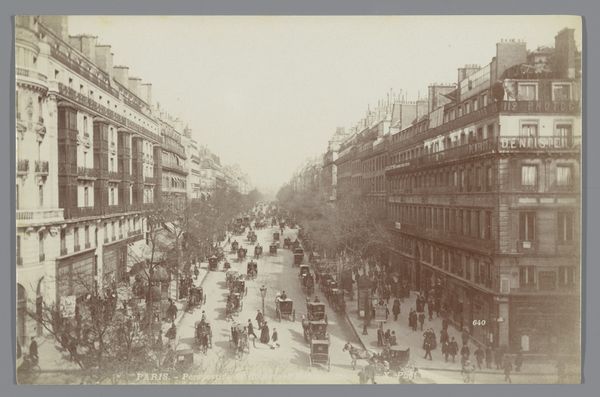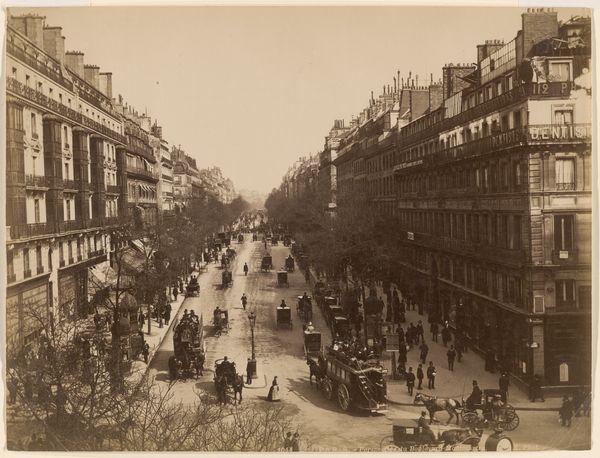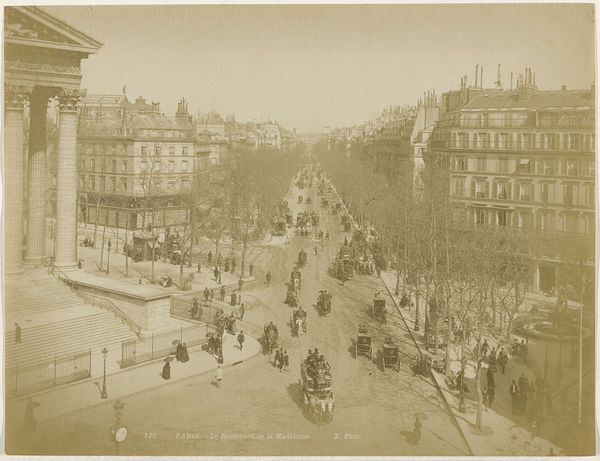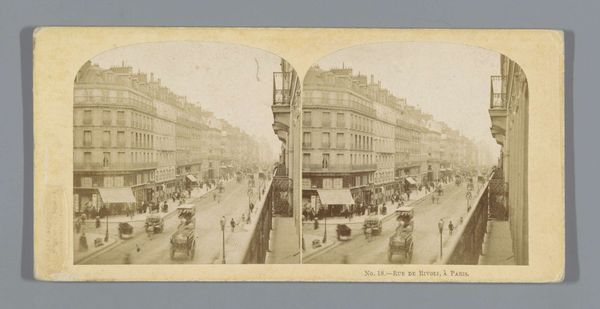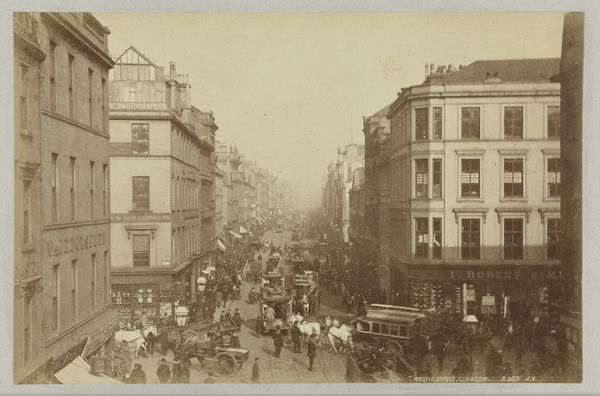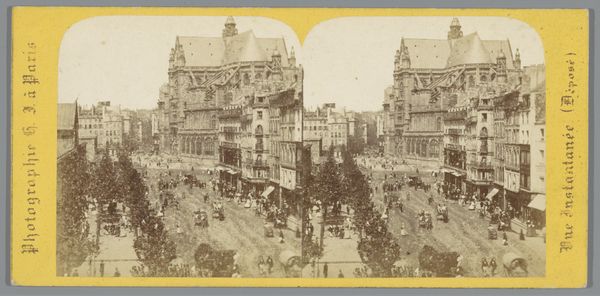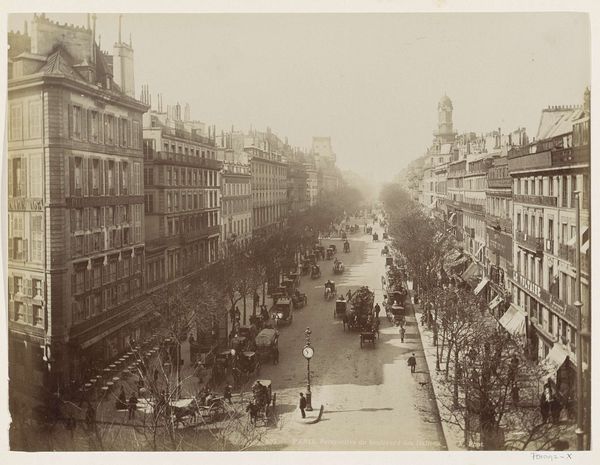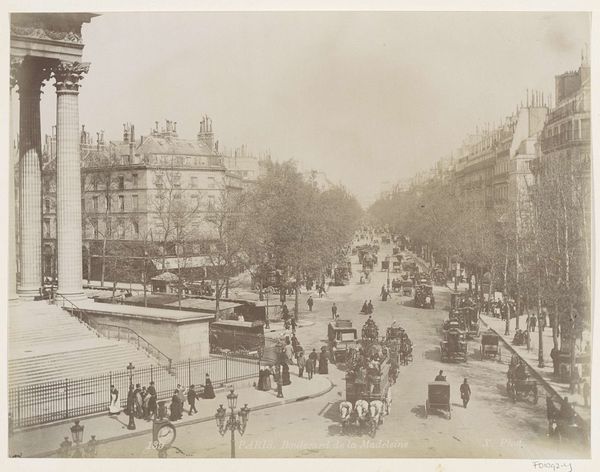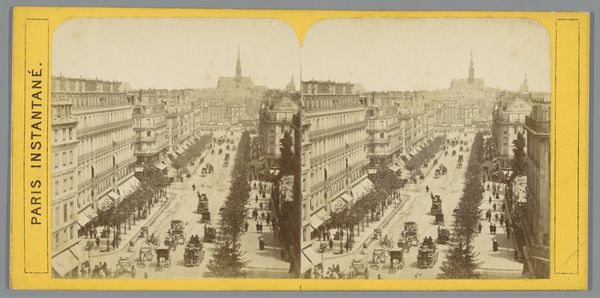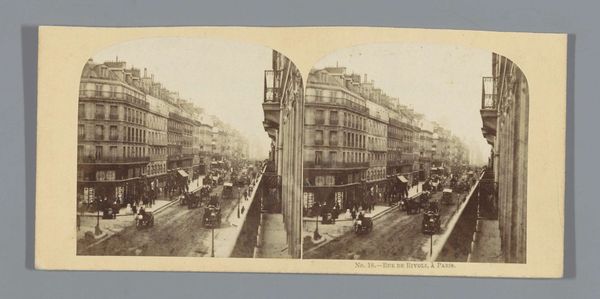
Gezicht op de Boulevard Montmartre, ter hoogte van de fotostudio van Reutlinger, Parijs 1895 - 1900
0:00
0:00
Dimensions: height 210 mm, width 274 mm
Copyright: Rijks Museum: Open Domain
Curator: Editor: So, here we have an albumen print by Lévy Fils et Cie, titled "View of the Boulevard Montmartre near the Reutlinger photo studio, Paris," taken sometime between 1895 and 1900. It's striking how the architecture seems to dominate the people; almost like they are ants scurrying about! What do you see in this piece that draws your attention? Curator: Well, let's think about what went into making this photograph. Albumen printing, popular at the time, required a lot of manual labor, from preparing the light-sensitive emulsion to coating and sensitizing the paper. The image captures not only a specific moment in Parisian life but also a moment in the industrialization of photography. Editor: Industrialization… so you’re saying that photography was becoming more of a commodity than a rarefied art form at that point? Curator: Precisely. The boulevard itself, carefully constructed under Haussmann, was a product of urban planning intended to facilitate commerce and control. The Reutlinger photo studio nearby represents another facet of this: the commodification of portraiture, mass-producing images of the bourgeoisie. How does that impact your interpretation of the artwork? Editor: I see what you mean! I was focused on the aesthetic – the implied hustle and bustle of city life—but it's all part of this bigger system, a changing relationship between labor, technology and everyday life. It really makes you question the role of photography itself, then. Curator: Exactly. Think of the resources needed, the labour involved, and the consumer culture it supported. Even the photographic materials and techniques employed contributed to and reflected these wider economic and social conditions. Editor: Thanks, this has broadened my perception significantly. Seeing the context behind this image, especially its materiality and its production makes me reflect on the bigger forces shaping not only art, but society itself. Curator: Absolutely, thinking through the material conditions behind the image offers us richer readings.
Comments
No comments
Be the first to comment and join the conversation on the ultimate creative platform.
